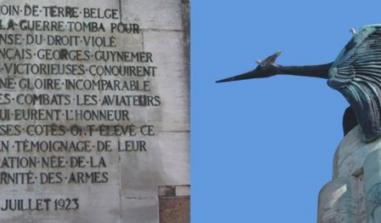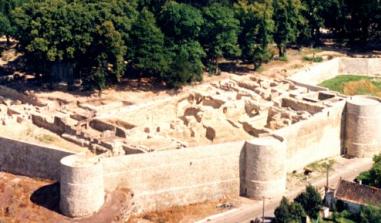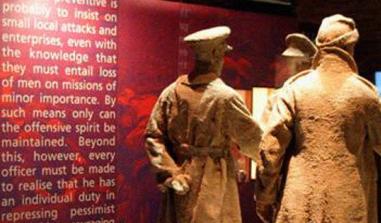French Museum in Chastre

The Chastre Necropolis. Source: DR
This museum was created just after the Second World War to keep alive the memory of the battles fought by the French army in Wallonia in May 1940
Established in the classrooms of a former school, the French Museum in Chastre, in Belgium was created just after the Second World War to keep alive the memory of the battles fought by the French army in Wallonia in May 1940.
The French Museum comprises two principal rooms. The first provides an overview of the deployment of the French, Belgian and British armed forces to implement the "Dyle manoeuvre" and recounts the battles led by the 4th Army Corps of the First French Army between Wavre and Namur to stop the German offensive in Belgium. Two principal phases of the battle are represented: the cover phase, which was the first great tank battle in history, involving more than a thousand armoured vehicles on the 12th and 13th May; and the arresting battle, a short-lived French tactical victory, that focussed on the small town of Gembloux. Four large maps provide a clearer understanding of the course of the operations of the Battle of the Dyle: the first shows the positioning of the allied armies, whilst the second takes stock of the situation on the 12th, 13th and 14th May 1940. The third is dedicated to the fighting on the 14th May at Gembloux and the last one charts the military situation on the 15th May 1940. These maps are accompanied by a wide range of military objects, some of which were recovered from the battle fields after the end of the fighting: uniforms and various weapons, including a French 20 mm anti-tank canon, ammunition and soldiers' equipment. Posters, historical documents, photographs and models etc. recreate the context and atmosphere of the time.
The museum's other room covers the Belgian and German armies in more detail, by recounting the battles in Belgium and the Netherlands during the month of May 1940. This is complemented by a detailed display of German units and a very rich collection of photographs taken by the enemy for propaganda purposes during the battle, as well as other assorted documents, weapons, models and equipment. One part of the exhibition, entitled "After the Battle" explains how enemy burial teams carried out the burial of the bodies of French soldiers on the battlefields. After the war, the Belgians made a list of the places where soldiers were buried on the battlefields. They also catalogued the objects found there. The bodies were later brought together. Nevertheless, some remains were still being discovered in the 1980's. Lastly, visitors can find out more about life in Belgium under German occupation through several everyday documents such as rationing cards and prisoners' letters etc.
After the war the French authorities wanted to group together the numerous graves of French soldiers killed in 1940 in a single place. It was with this objective in mind that the military cemetery at Chastre was created. Situated seven kilometres from Gembloux, it was opened on the 10th May 1970. It is the property of the French state, where the remains of those soldiers that were not repatriated to France are contained together.
The cemetery covers an area of seven hundred square metres but it does not give an exact idea of the number who died on the field of honour in 1940: indeed, although more than a thousand French servicemen rest in Chastre, including 171 who are unidentified and all the North African servicemen (Moroccans, Algerians and Tunisians) killed during the battle, they are mixed in with 192 soldiers killed during the Great War and others who died between 1940 and 1945. There are also commemorative monuments to the Battle of the Dyle in Jandrain, Gembloux, Saint-Gérard, Flavion and Ondaye etc.
French Museum in Chastre
rue du Tensoul B1450 Chastre, Belgium
Tel.: + 32 81/61 31 40
E-mail: museemai40@skynet.be
Open on Sundays and Bank Holidays. 2-6 pm, from the 15th May to the 30th September.
Practical information
rue du Tensoul B1450
Chastre
Tel. : 0032 81/61 31 40
Musée ouvert les dimanches et jours fériés, 14h - 18h, du 15 mai au 30 septembre. Nécropole accessible toute l'année




